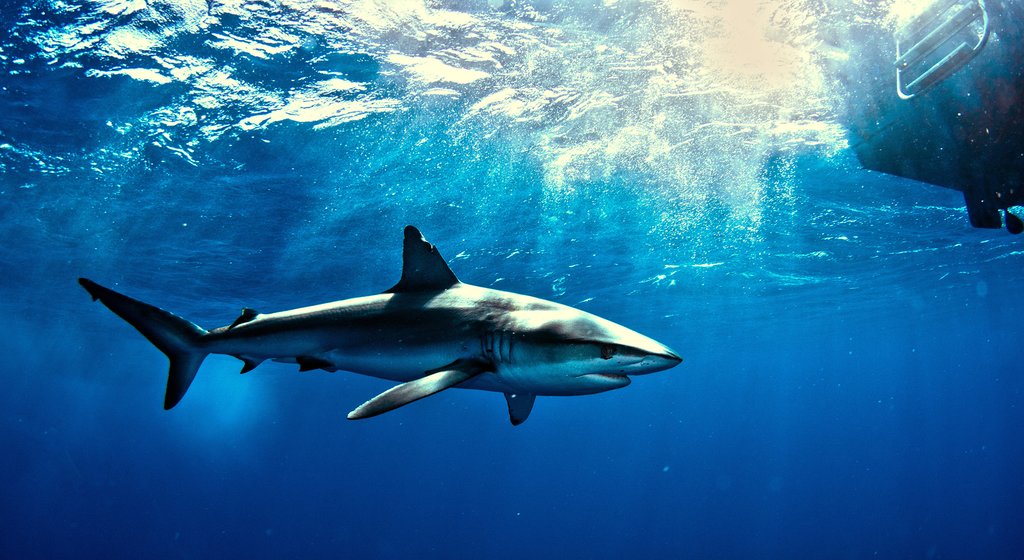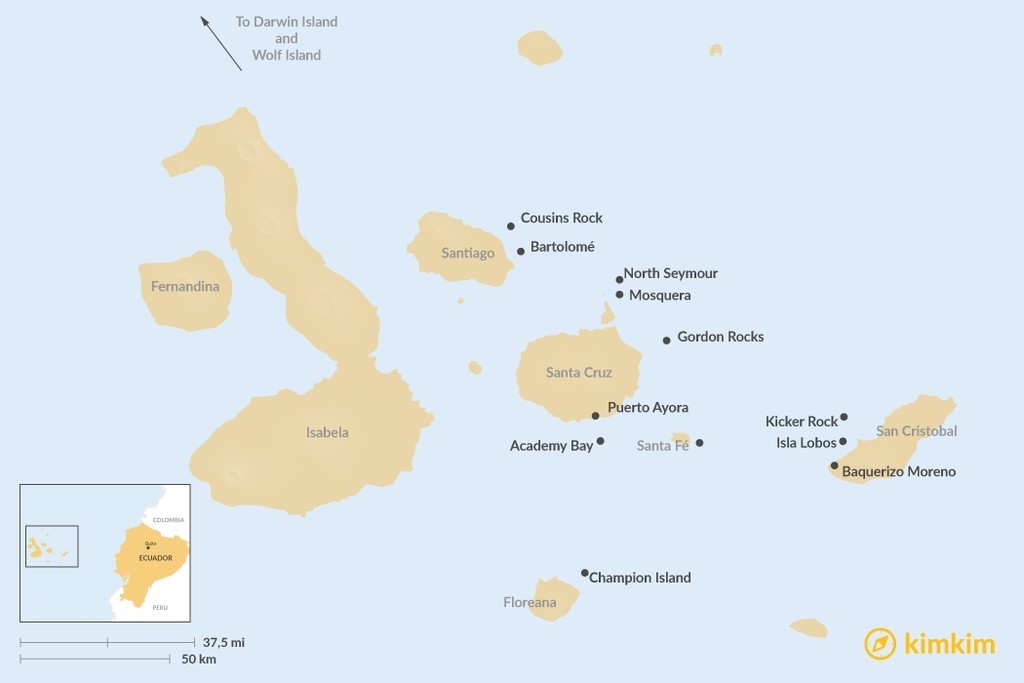
The Galapagos Islands are spectacular in so many ways, but even more so underwater. The seascapes of reefs, ledges, walls and extinct volcanic craters are teeming with wildlife – from sea lions and marine iguanas to turtles and schools of hammerhead sharks. This guide tells you all you need to know to discover one of the world’s best diving destinations.
## An Immersive Dive into the Galapagos Islands: A Diver’s Paradise
The Galapagos Islands, a name synonymous with unique wildlife and evolutionary marvels, offer an unparalleled diving experience that can truly alter one’s perspective, much like it did for Charles Darwin in the 1830s. This extraordinary archipelago served as the primary inspiration for his groundbreaking Theory of Evolution, forever changing our understanding of humanity’s place within the vast and intricate web of life. What sets the Galapagos apart is the remarkable tameness of its creatures, a direct result of the islands’ historical lack of significant natural predators.
Here, animals exhibit an almost disarming lack of fear towards humans, allowing for intimate encounters that are simply not possible anywhere else on the planet. The key to the Galapagos’ extraordinary biodiversity and unique marine environment lies in the powerful Humboldt Current. This cold-water current sweeps up from the depths of the Pacific Ocean, bringing with it an abundance of nutrients that fuel the entire ecosystem. It is the Humboldt Current that makes the seemingly impossible a reality: penguins thriving on the Equator. The cool, nutrient-rich waters create a haven for an incredible diversity of marine life, transforming the Galapagos into a world-renowned destination for diving enthusiasts of all levels. Prepare to be amazed by the sheer abundance and variety of underwater wonders that await you in this extraordinary corner of the world.
**Highlights of a Galapagos Diving Adventure:**
* **Dive with a playful colony of sea lions at Champion Island in Floreana:** Witness the acrobatic grace of these marine mammals as they dart and twirl through the crystal-clear waters, offering an unforgettable encounter.
* **Swim alongside the only penguins found north of the Equator:** An absolute must-see experience that is unique to the Galapagos.
* **Observe massive schools of hammerhead sharks congregating at the submerged crater of Gordon Rocks:** A thrilling encounter for experienced divers, this location is a magnet for these magnificent creatures.
* **Encounter gigantic whale sharks from a Liveaboard cruise at Wolf Island:** From June to November, these gentle giants grace the waters around Wolf Island, offering a truly awe-inspiring experience.
**Planning Your Galapagos Diving Trip:**
Diving in the Galapagos is a rewarding experience suited to various skill levels, though some of the most spectacular dive sites are reserved for more experienced divers. A PADI Open Water certificate, or an equivalent certification from another recognized diving organization, is the minimum requirement for diving in the Galapagos. While it is possible to learn to dive within the Galapagos, it is highly recommended to arrive already certified to maximize your time and explore the most challenging and beautiful sites.
Divers visiting the Galapagos typically choose between two primary options: staying on a dedicated liveaboard dive boat or basing themselves in hotels and taking daily diving excursions. Liveaboards offer the distinct advantage of accessing remote areas of the archipelago, including the pristine waters surrounding Fernandina, Darwin, and Wolf Islands. These remote locations boast some of the most spectacular and biodiverse dive sites in the Galapagos. However, Liveaboard tours are typically more expensive, require booking well in advance due to limited capacity, and are restricted to certified divers, which may not be suitable for travelers with non-diving partners.
Staying in hotels and undertaking day trips offers greater flexibility and the opportunity to explore the islands above the waterline. However, this option restricts divers to sites within easy reach of the main population centers of Puerto Ayora on Santa Cruz Island and Baquerizo Moreno on San Cristobal Island. Despite this geographical limitation, divers have access to over a dozen different day trip options, offering a diverse range of diving experiences.
**The Best Time to Dive in the Galapagos:**
The Galapagos Islands experience two distinct seasons, each offering unique advantages for diving. The warmer, rainy season extends from December to May, characterized by water temperatures typically ranging from 68°F to 82°F (20°C to 28°C). While rainfall is more frequent during this period, it is generally light and concentrated in the highlands. This period also coincides with the high tourist season, resulting in higher prices, particularly during peak periods such as Christmas, Carnival, and Easter.
The cooler, drier season occurs from June to November, bringing with it cooler water temperatures that typically range from 59°F to 72°F (15°C to 22°C). This season also sees increasingly rough seas, which can make diving conditions more challenging. Although the warmer season offers calmer seas and more comfortable diving and snorkeling conditions, the cooler season often brings an even greater abundance of marine life, particularly large pelagic species.
**Top Galapagos Dive Sites: A Curated Selection**
* **Beginner and Intermediate Dive Sites:**
* **Academy Bay in Puerto Ayora:** An ideal location for absolute beginners, offering calm conditions and easy access.
* **Santa Fé Island:** A short day trip from Puerto Ayora, offering varied wildlife encounters, including stingrays, turtles, sea lions, and reef sharks.
* **North Seymour and Mosquera:** Experience exciting drift dives alongside reef sharks in these accessible locations.
* **Floreana Island (including Champion Island):** A must-visit for diving with playful sea lion colonies.
* **Kicker Rock (Sleeping Lion) near San Cristobal:** A towering rock formation that attracts hammerhead sharks and other shark species. This trip is often combined with snorkeling or diving with sea lions at Isla Lobos.
* **Cousins Rock near Santiago Island:** This site boasts a series of ledges and overhangs that are home to a vast range of marine species, including sharks, rays, and seals. A tour is often combined with a visit to the unique rock formations at Bartolomé Island, known for its penguin population.
* **Advanced Dive Sites:**
* **Gordon Rocks:** Located near Puerto Ayora, this challenging dive site requires experience of 25-30 dives due to its strong currents. An extinct volcanic crater with three pinnacles, Gordon Rocks is famous for its large schools of hammerhead sharks.
* **Darwin and Wolf Islands:** These remote, northernmost islands offer some of the best and most challenging diving in the Galapagos. Accessible only by liveaboard cruises, these locations are renowned for encounters with massive schools of hammerhead sharks and the majestic whale sharks that cruise the waters from June to November. Darwin’s Arch is also a popular spot for observing bottlenose dolphins.
**Galapagos Wildlife Highlights: Beyond the Sharks**
* **Sea Lions:** A close encounter with these playful creatures is often a highlight of any Galapagos trip. The pups, in particular, delight in interacting with snorkelers and divers, showcasing their incredible agility in the water. While generally harmless, it is important to give the larger males a wide berth as they can occasionally display aggressive behavior.
* **Marine Iguanas:** These unique reptiles are the only lizard species in the world that have adapted to a marine environment. They have evolved to dive beneath the waves to graze on algae, capable of descending to depths of over 12 meters. After their underwater excursions, they bask on the rocks to warm up.
* **Sea Turtles:** Four different species of sea turtles inhabit the waters surrounding the Galapagos. They are typically seen swimming alone or in pairs, growing up to 1.2 meters in length. These gentle giants feed primarily on seaweed and can often be observed resting on the seabed. The mating season, from November to January, provides the best opportunity to witness these creatures, after which the females come ashore to lay their eggs, burying them in the sand to protect them from predators.
* **Sharks:** While the presence of sharks may seem daunting, most species in the Galapagos are harmless to humans. White-tipped and black-tipped reef sharks are commonly seen resting under rocks and swimming close to shore. Hammerhead sharks, with their distinctive head shape, are frequently encountered on dives. The largest shark in the archipelago is the magnificent whale shark, reaching lengths of up to 20 meters. These gentle giants can be found off Darwin and Wolf Islands between June and November.
* **Rays:** The Galapagos waters are teeming with a variety of ray species. Stingrays are the most common, and caution should be exercised to avoid getting too close. Golden rays offer a splash of vibrant color, while the elusive spotted eagle rays prefer the deeper waters. Manta rays, with their immense size of up to six meters across, are a truly awe-inspiring sight.
* **Seabirds:** The Galapagos Islands are renowned for their unique birdlife, which is easily observed on land. Frigatebirds displaying their inflated red chests and blue-footed boobies performing their comical mating dances are iconic sights. However, the underwater spectacle of seabirds dive-bombing the ocean to catch fish is equally captivating. The Galapagos penguins, one of the smallest penguin species in the world and the only species found so far north, add another layer of wonder to the archipelago’s diverse ecosystem.

